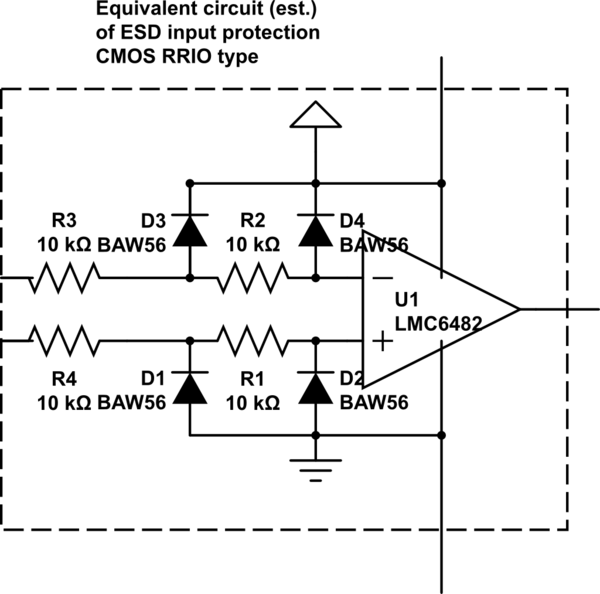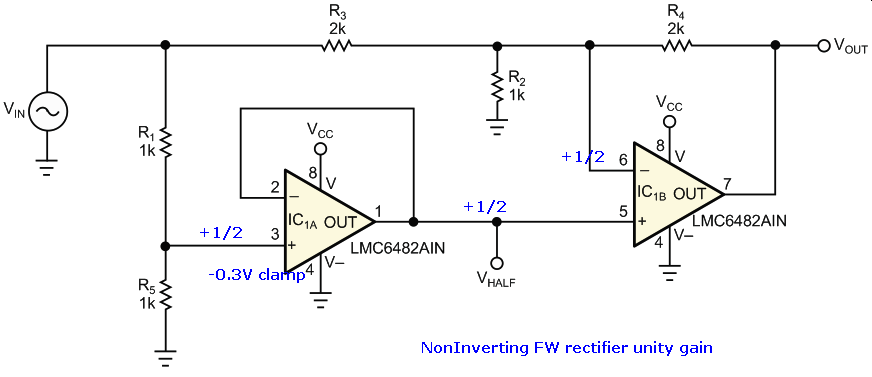Many Precision Rectifier Single Supply Op Amp circuits feed the input AC waveform into the non-inverting (+) terminal of an op amp e.g. see this schematic:
Image source: Precision full-wave signal rectifier needs no diodes
Say Vcc = +15V, Vee = 0V, and Vin is an AC input of +/- 5V (10V peak-to-peak), then when Vin is in the negative half-cycle, the first op amp outputs zero volts (it can't go lower), so input V(-) is also 0V via the feedback. Input V(+) however is controlled by the input AC voltage and will fall to -2.5V at its minimum. Now most op amp specs say under Absolute Maximum Ratings: Input Voltage "Vee-0.3V to +32V" say).
My question is, surely Vin at -2.5V is outside of the Absolute Maximum Rating of -0.3V? Also the Common Mode input at -1.25V is outside. So am I missing something? Any light anyone can shed on this will help a lot.
See https://www.radiolocman.com/shem/schematics.html?di=161475 for the complete article.





